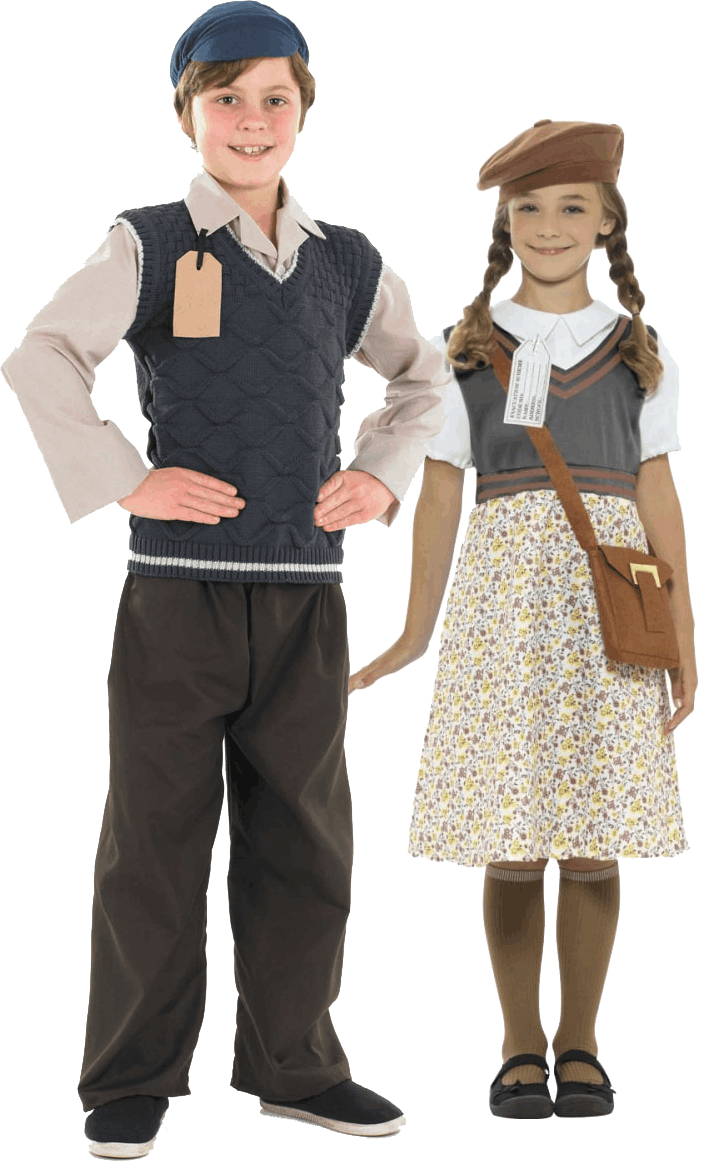
Evacuation 2
So, Operation Pied Piper meant that the children in areas designated 'danger areas' were to be sent to safe areas.
Who can tell me what 'designated'
means?
It means 'given a name'.
The country was divided into three main areas -
evacuation,
neutral and
reception.
An evacuation area was where
the government guessed the Germans would attack,
neutral areas were where the government thought
the Germans might attack and reception areas
were the areas thought to be safe from attack
and therefore areas where children could be
sent.
What sort of places would be ‘evacuation’
areas?
Large cities and industrial areas, but not only
London, but Birmingham (halfway up the country),
Liverpool, Manchester and Glasgow. These were
areas from which people wold be removed.
What would a ‘neutral’ area be?
An area which had light industries or small
industries, not concentrated in a city or
certain area. These were areas from which people
would neither be sent, nor would these areas
receive evacuees.
Can you guess what a
‘reception’ area would be?
An area which would receive those people who
were evacuated from ‘evacuation’ (dangerous)
areas.
And what about a safe area?
A safe area was anywhere the Germans would have
no interest in attacking - countryside, areas
where there was no industry contributing to the
war effort or anywhere else where there was
nothing worth bombing.
Operation Pied Piper was designed to keep safe
the parts of the population who were
vulnerable.
The evacuees were divided into groups.
The first group was the school
children. In those days, you stayed at school
until just 14 - and then you could go to work or
for further study and then university. Most
people left at 14.

Here are two evacuee children - these are models but you can see the labels they had to wear.
The second group was ‘the infirm’. Someone who is ‘infirm’ is someone who is perhaps old, wobbly, disabled, or needs help getting around.
The third group was pregnant women. Obviously, as some men joined the forces, they had left behind their wives who had mysteriously become pregnant. Clearly they couldn’t move particularly quickly so they had to be evacuated.
The last group was mothers with babies or children under school-age (up to about 4 years old). This was the only group which were allowed to stay together when they were evacuated.
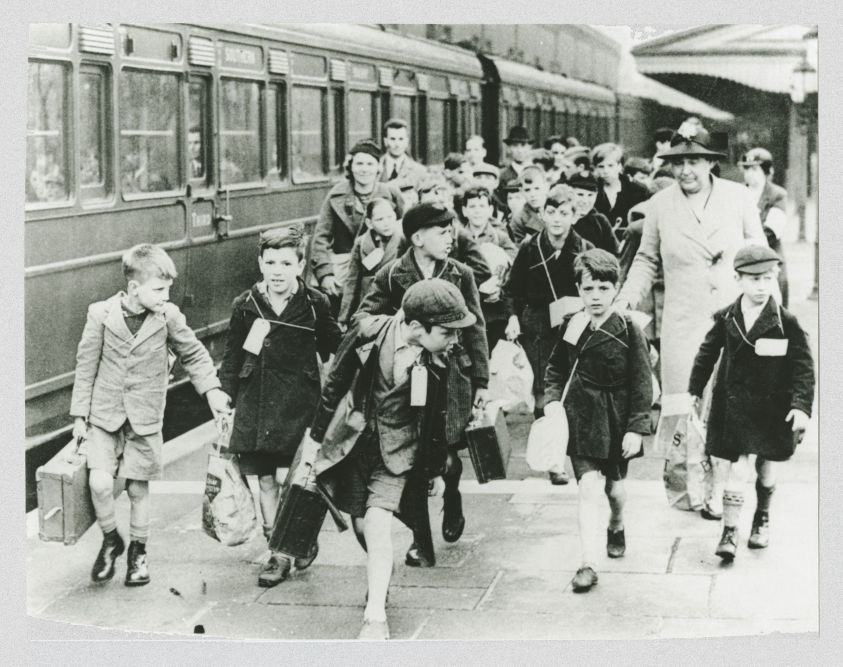
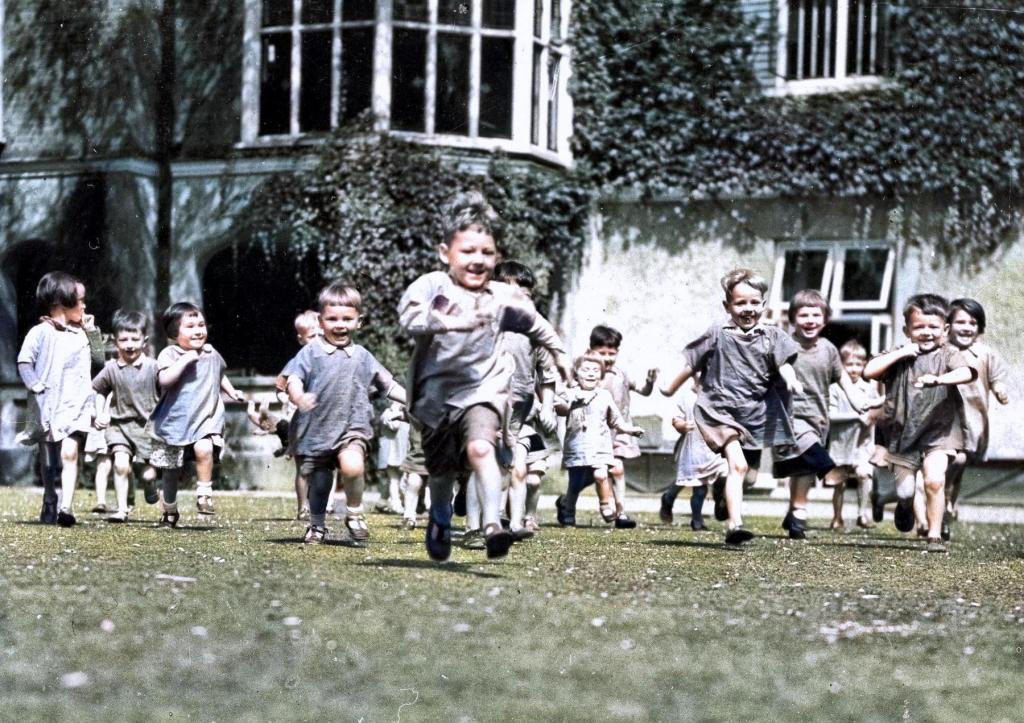
Every child - as you can see - had to have a label, Identity Card and a Ration book with them - often tied to them with string. WW2 was the only time in British history that Britons were required to have an identity card.
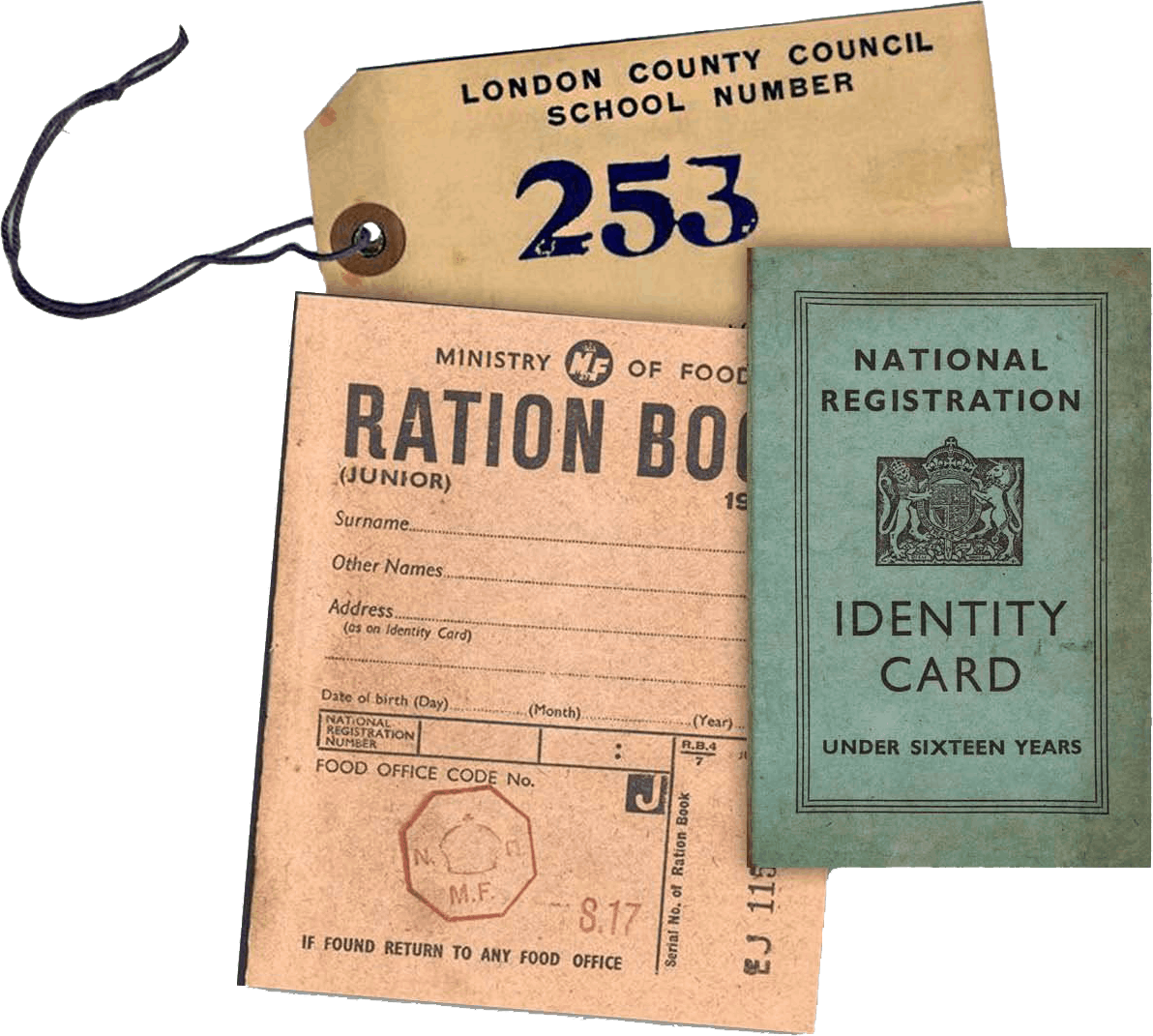
The problem was, sending children away without their parents - only with their teachers - that parents were reluctant to send their children away.
What does ‘to be reluctant’
mean?
It means not to be enthusiastic, not to want to
do something - unwilling.
What the government did was arrange their own
poster campaign to persuade parents that their
children would be safer away from danger areas.
It was also a propaganda campaign; if you
remember, that odd little man Dr Josef Goebbels
was in charge of propaganda against the Jews;
that was bad propaganda - but propaganda can
serve good purposes too.
The posters were a bit ‘heavy-handed’.
What do you think
‘heavy-handed’ means’?
It means very obvious, almost too much, ‘over
the top’.
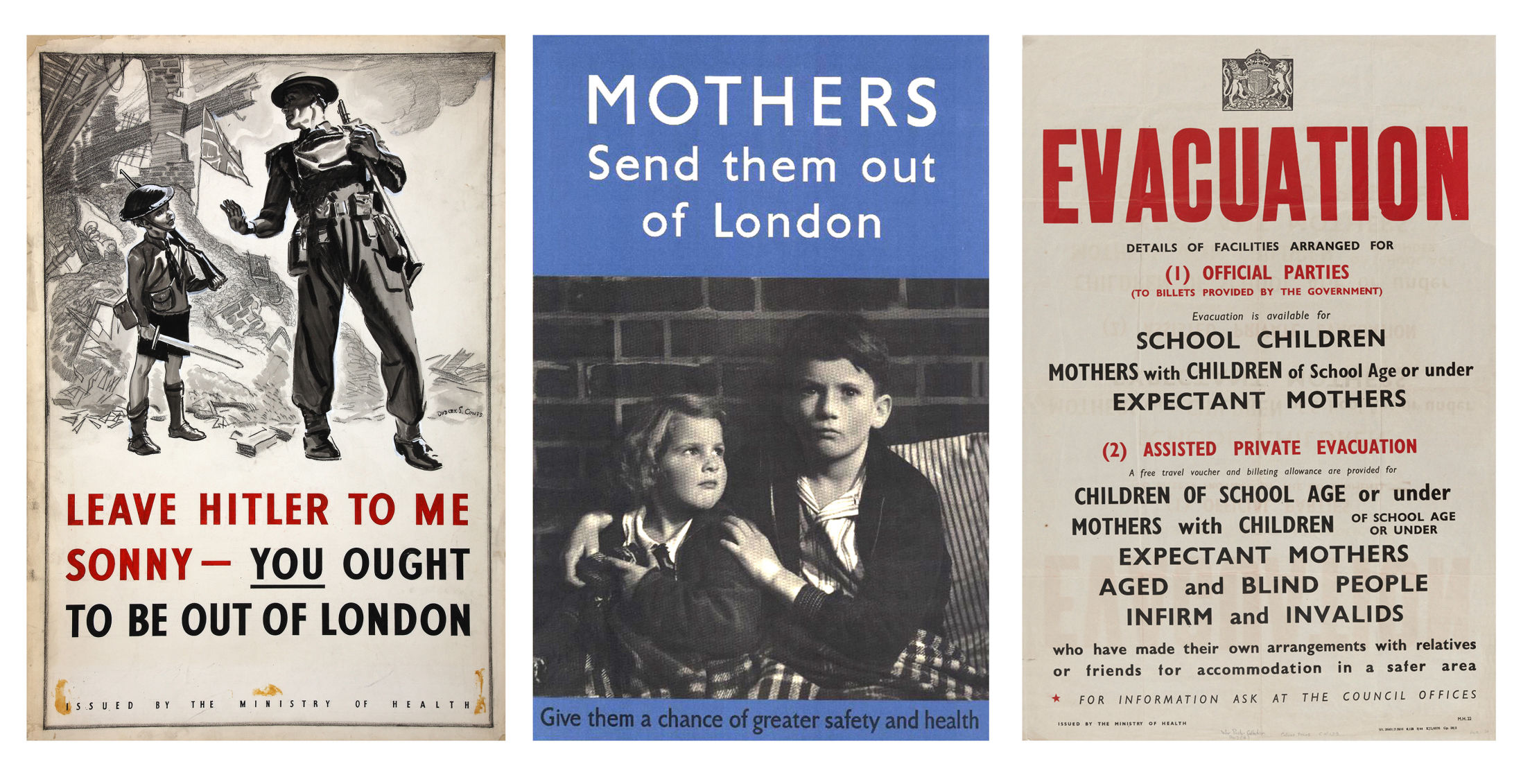
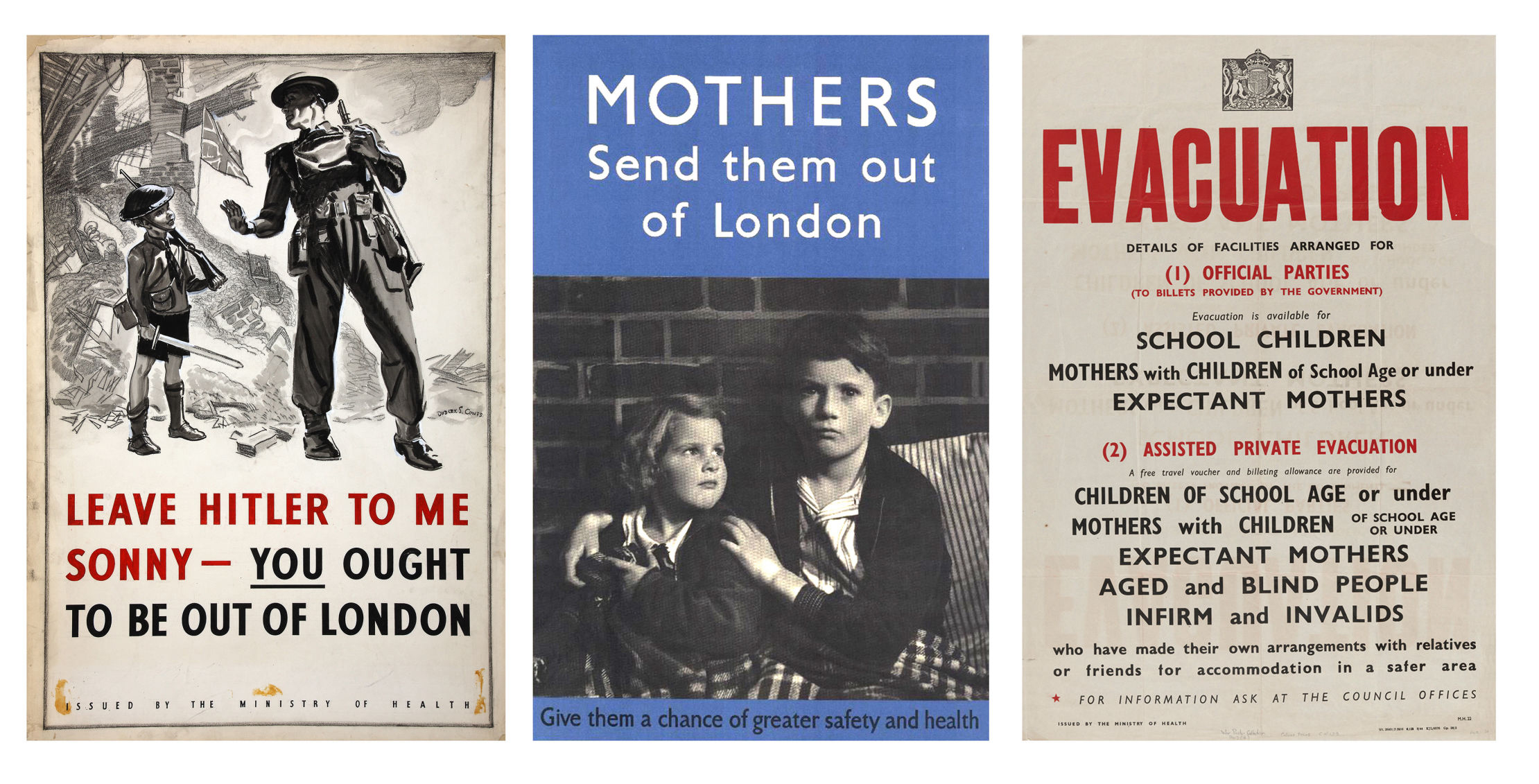
These three posters show government posters - they very much tell parents that they are being uncaring and putting their children in danger if they do not evacuate them.
The thing is, that it worked.
When war was declared in 1939, thousands of
children were evacuated within the first few
weeks. In fact, it started 2 days before war was
declared. Which was great!
However, there was a problem. The Germans
didn’t attack until 1940. We’ll deal with that
later.
The evacuation of children was actually really
well-organised, and the railways, buses and
other forms of transport all worked together to
get the children out of the danger areas.
However, as children, many people only
remembered chaos and disorder; but then, they
were children and didn’t have much idea what was
going on.
They were told to pack a suitcase, get their
ration books and ID cards, and go to their
schools early the next morning. There they were
given their labels and told absolutely not to
lose those labels.
Then they either walked to the local railway
station or buses arrived to take them to railway
stations and tearfully, mothers - and some
fathers - said good bye.
Evacuation was not for ever, and parents were
allowed to visit the children, but only once
they had arrived and sent their new addresses
home.
Most children seemed to think it was a great adventure, and some were devastated and upset. Teachers had to look after their class; even nuns and other women’s organisations helped out.